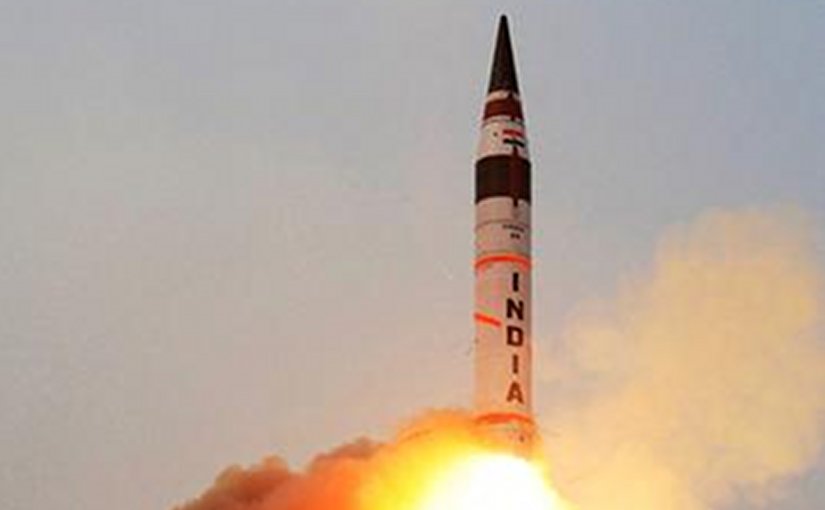 Missile Proliferation, India, Prithvi II And Deterrence Stability In South Asia – OpEd – Eurasia Review
Missile Proliferation, India, Prithvi II And Deterrence Stability In South Asia – OpEd – Eurasia ReviewBy Asma Khalid*
India and Pakistan’s adversarial relations are locked in a classic military security dilemma that is characterized by the production and development of sophisticated nuclear and conventional technologies, leading towards an arms race. After going overtly nuclear, the development of nuclear and missile capabilities of India and Pakistan has been intensified to ensure their security. However, India’s rising missile ambitions has forced Pakistan to build up its nuclear capabilities to maintain credible nuclear deterrence in region.
India started its ballistic missile program in the mid 1980s and pursued it in more systematic manners. Recent trends have revealed that India is developing numerous nuclear delivery systems, trends of missile development includes Shorter and Longer range missiles, MIRVing, and a shift from liquid to solid fuel missiles or ready arsenals. Such advancements and a higher level of readiness by India has challenged the vary basics of strategic and deterrence stability in South Asia.
At the end of 2016, India’s successful test of sea-based ballistic and cruise missile system, Agni V, with a strike range of 5,500- 5,800 Km, capable of carrying payload of 1,500 kg. India claims that Agni V is to provide deterrence against China. Consequently, after this test India test fired various missiles such as the Agni III and successful test of interceptor missile to develop a two-layered Ballistic Missile Defence system. India’s intentions and nuclear capabilities has increased the chances that a bilateral crisis could escalate in a more dangerous way.
Recently, India tested the nuclear capable ballistic missile Prithvi II with a strike range of 350 km, capable of carrying 500 kg to 1,000 kg of warheads. The missile is indigenously developed and undergoing developmental trial and said to capable to hit the major cities of Pakistan from Indian Territory. This factor rejects the Indian claim that its conventional and nuclear programs are China specific as Prithvi II has direct relevance to Pakistan.
India’s missile proliferation has forced Pakistan to response India to maintain its security and regional stability. Principle drive for Pakistan’s missile program is “security” and it is totally Indian specific. It has been repeatedly mentioned by Pakistan’s officials that India’s conventional and nuclear capabilities have forced Pakistan to enhance its nuclear competencies to counter the Indian threat. In order to maintain credible deterrence against Indian threat, Pakistan possesses an adequate number of nuclear capable missiles including Abdali (Hatf-2), Ghaznavi (Hatf-3), Shaheen I (Hatf-4), Ghauri (Hatf-5), Shaheen II (Hatf-6) and Nasr (Hatf-9) that have ability to counter-value the targets in India. Most importantly successful test of Ababeel with the introduction of a missile with multiple independently targetable re-entry vehicles (MIRV) has proved that despite facing defence production gap in conventional forces has successfully maintained technological and deterrent capability by developing effective ballistic missile program.
Hence, the dynamics of ballistic missile development in South Asia present that although India’s ballistic missile defense capabilities are at its full pace of development, at the same time the fact cannot be ignored that India is also dictated by a lack of strategic depth and Pakistan’s full spectrum credible deterrence is capable to deter all forms of Indian aggression.
Subsequently, talking about regional security landscape, it is imperative to mention that regional security outlook is complex such as; Pakistan’s threat perception revolves around India, whereas India’s threat perception comes from China. Under this complex security outlook, India’s quest for missile program has broad regional and global implications. First, India’s expanding missile capabilities marked by improvement in range, payload and accuracy not only indicate that India is heading towards higher level of readiness but also pushing the region towards the destabilizing arms race. Secondly, It has reduces the chances of any bilateral arms control arrangement in South Asia. Third, Pakistan as well as China’s centric missile program of India will further complicate the security dilemma in South Asia. Therefore, India’s increased level of readiness and destabilizing ballistic missile program is a dangerous combination for deterrence and strategic stability in region.
Therefore, India’s expanding fissile material production, nuclear capable ballistic missiles including MIRVs and recent test of Prithvi II is a wakeup calls for major powers and global non-proliferation regime as it is not only disturbing the deterrence stability in region but also raises the international apprehension of regional states regarding India’s growing missile capabilities.
*Asma Khalid is a Research Associate at Strategic Vision Institute, a think-tank based in Islamabad. Email: asmaakhalid_90@hotmail.com.